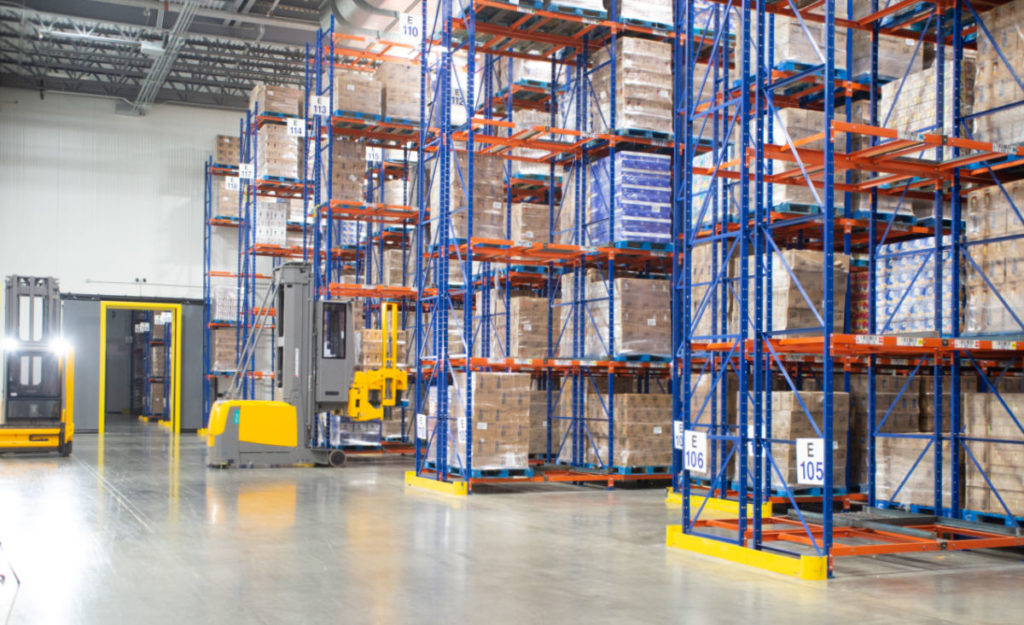 Optimizing food warehousing and storage is critical to ensuring the food supply is safe for people to eat. Food warehouses play a critical role in ensuring that food products are kept at safe temperatures, in the right conditions, and are distributed to retailers and consumers quickly and efficiently. Effective food warehousing strategies can help reduce waste, increase profits, and ensure that customers always have access to high-quality products. Every day, new best practices and technologies emerge that are designed to help improve food warehousing. In this blog post, we will discuss some of the best ways to optimize food warehousing and storage for efficiency and safety.
Optimizing food warehousing and storage is critical to ensuring the food supply is safe for people to eat. Food warehouses play a critical role in ensuring that food products are kept at safe temperatures, in the right conditions, and are distributed to retailers and consumers quickly and efficiently. Effective food warehousing strategies can help reduce waste, increase profits, and ensure that customers always have access to high-quality products. Every day, new best practices and technologies emerge that are designed to help improve food warehousing. In this blog post, we will discuss some of the best ways to optimize food warehousing and storage for efficiency and safety.
Invest in a High-Quality Warehouse Management System (WMS): A WMS can help food warehouse managers track inventory, manage orders, and handle shipping and receiving. By integrating these functions, a WMS can help food companies reduce inefficiencies and errors in the supply chain. A WMS can also improve traceability by tracking food products from the moment they enter the warehouse to their final destination.
Utilize Automated Storage and Retrieval Systems (AS/RS): An AS/RS can help food warehouses improve organization and reduce space requirements. These systems use robotics and conveyors to store and retrieve products automatically. This helps to reduce errors and improve efficiency, as well as improve the speed of order fulfillment.
Implement Comprehensive Labeling and Tracking Systems: A robust labeling and tracking system can help food companies manage inventory effectively. In addition, it can help reduce waste by ensuring that products are used in the correct order. Labeling and tracking systems can alert managers to any issues with temperature or humidity control, allowing them to take corrective action quickly.
Prioritize Food Safety: The safety of the food supply is of paramount importance. A robust food safety program should include a Hazard Analysis and Critical Control Points (HACCP) program which helps identify potential food safety risks and the points in the supply chain where they can be mitigated. A strong food safety program should include regular inspections, hygiene training for employees and procedures for handling and disposing of both contaminated and spoiled products.
Use Technology to Monitor Storage Conditions: Technology has revolutionized food warehousing and storage. IoT sensors can be used to monitor storage conditions such as temperature and humidity, to alert warehouse managers to any issues or discrepancies. This can help prevent spoilage and reduce waste.
Conclusion:
Optimizing food warehousing and storage is a crucial part of meeting consumer demand for fresh, healthy, and high-quality food products. By investing in modern storage and retrieval systems, implementing robust labeling and tracking systems, prioritizing food safety, and using technology to monitor storage conditions, food companies can optimize their supply chain, improve efficiency, and reduce waste. The strategies discussed in this blog post can help food companies improve their operations while ensuring the safety and quality of their products. Remember, a safe and efficient supply chain means that your customers will have access to the products they need, when they need them.



